Abstract
1. Mg2+-limited Bacillus subtilis var. niger, growing in a chemostat in a simple salts medium, contained considerably more potassium and phosphorus than Mg2+-limited Aerobacter aerogenes growing in a similar medium at corresponding dilution rates. 2. Growth of the bacillus in a K+-limited environment did not lower the cellular potassium and phosphorus contents, the molar proportions of cell-bound magnesium, potassium, RNA (as nucleotide) and phosphorus being approximately constant at 1:13:5:13 (compared with 1:4:5:8 in Mg2+-limited or K+-limited A. aerogenes). 3. Growth of B. subtilis in a phosphate-limited environment caused the cellular phosphorus content to be lowered to a value similar to that of Mg2+-limited A. aerogenes, but the potassium content was not correspondingly lowered; the molar potassium:magnesium ratio varied from 14 to 17 with changes in dilution rate from 0·4 to 0·1hr.−1. 4. Whereas over 70% of the cell-bound phosphorus of Mg2+-limited or K+-limited A. aerogenes was contained in the nucleic acids, these polymers accounted for less than 50% of the phosphorus present in similarly limited B. subtilis; much phosphorus was present in the walls of the bacilli, bound in a teichoic acid-type compound composed of glycerol phosphate and glucose (but no alanine). 5. Phosphate-limited B. subtilis cell walls (from organisms grown at a dilution rate of 0·2hr.−1) contained little phosphorus and no detectable amounts of teichoic acid, but 40% of the cell-wall dry weight could be accounted for by a teichuronic acid-type compound; this contained a glucuronic acid and galactosamine, neither of which could be detected in the walls of Mg2+-limited B. subtilis grown at a corresponding rate. 6. It is suggested that the high concentration of potassium in growing B. subtilis (compared with A. aerogenes) results from the presence of large amounts of anionic polymer (teichoic acid or teichuronic acid) in the bacillus cell walls.
Full text
PDF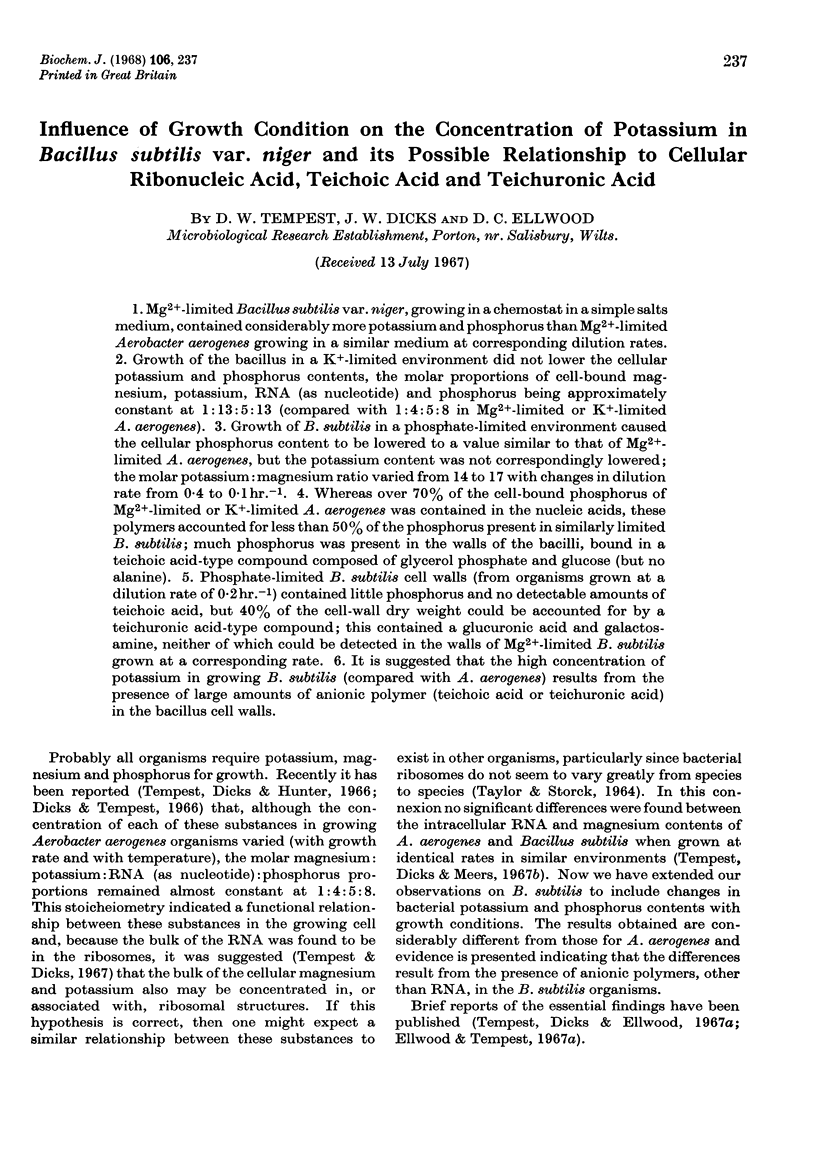
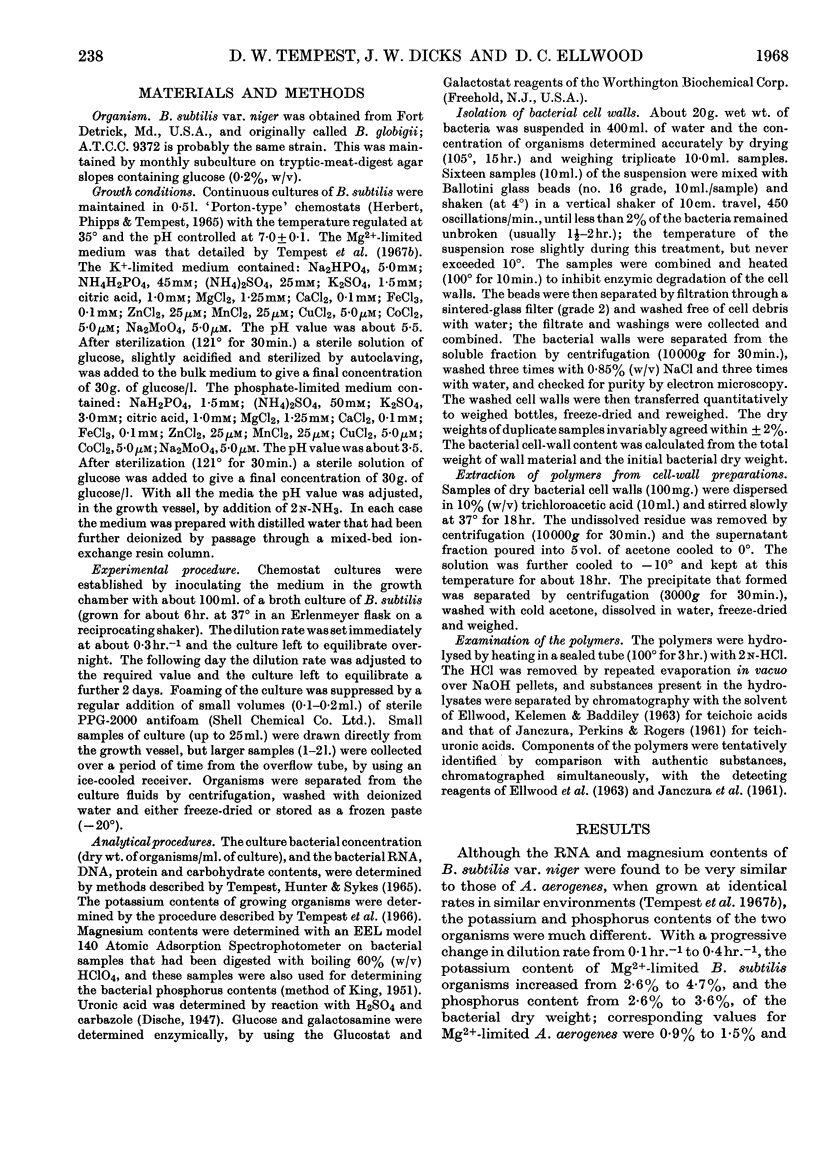
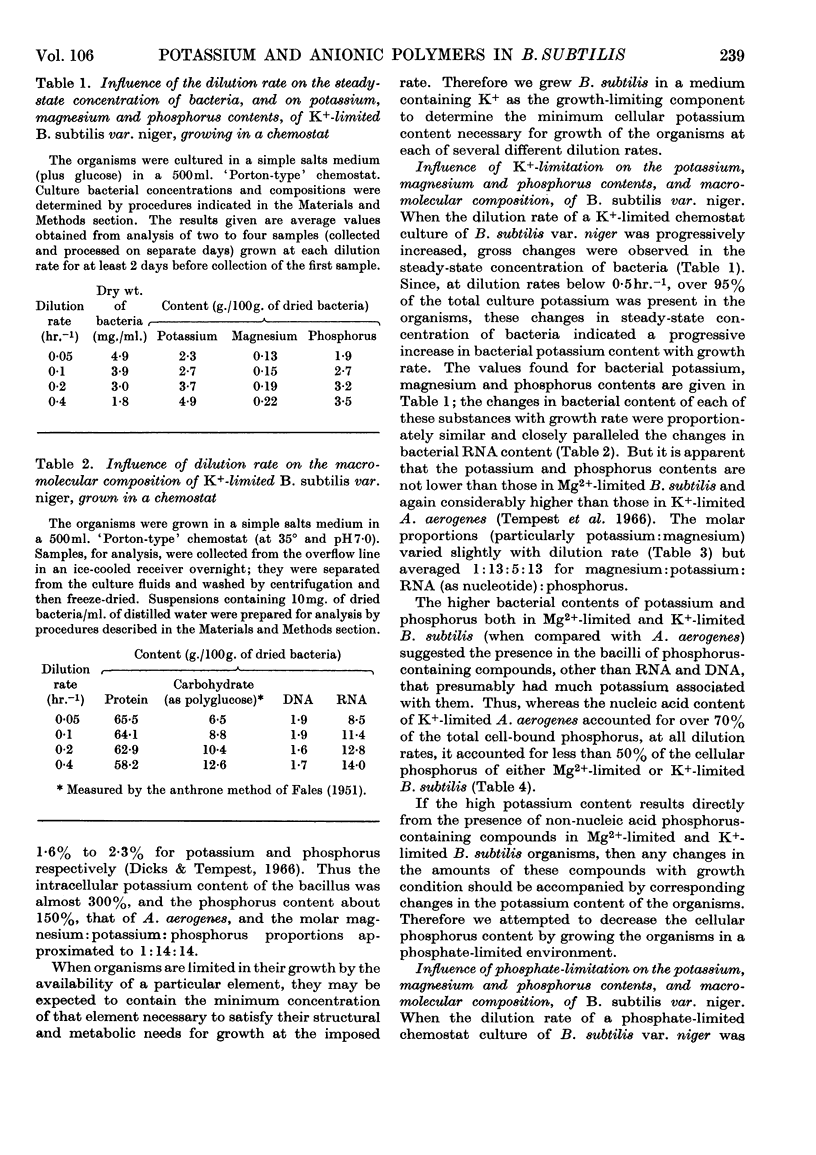
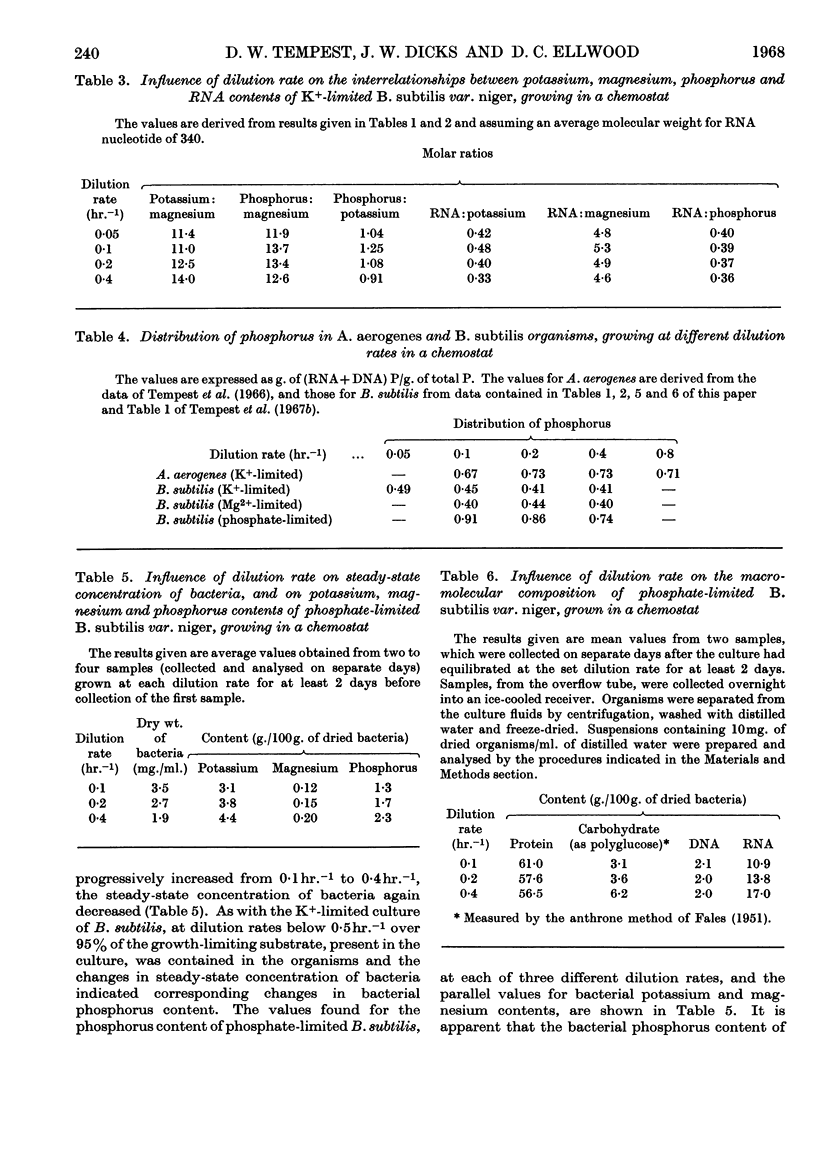
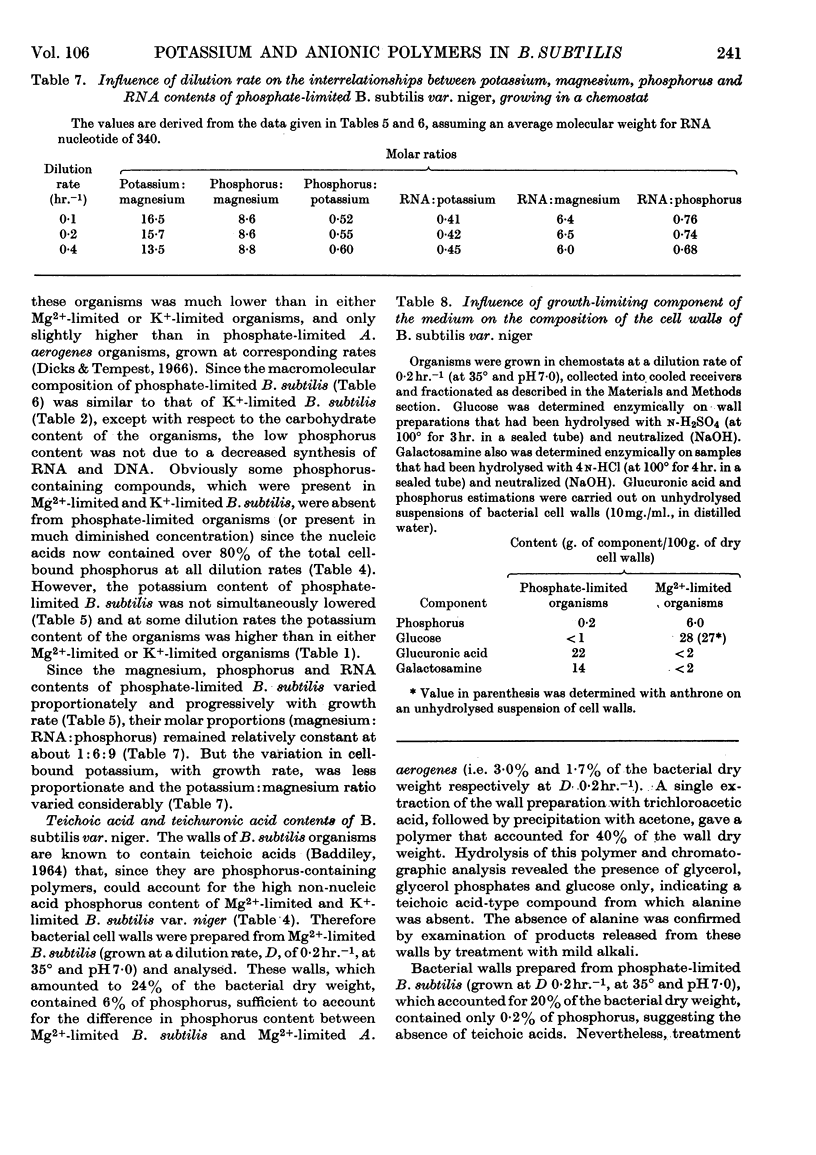
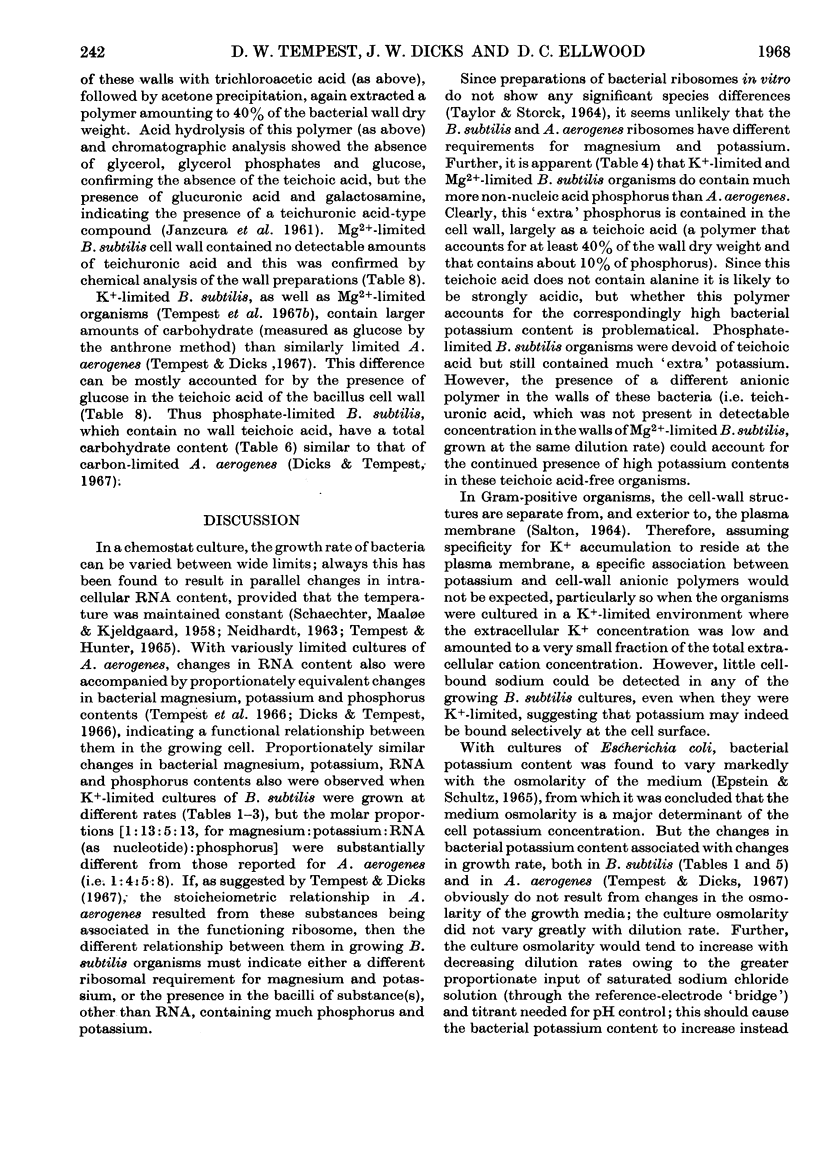
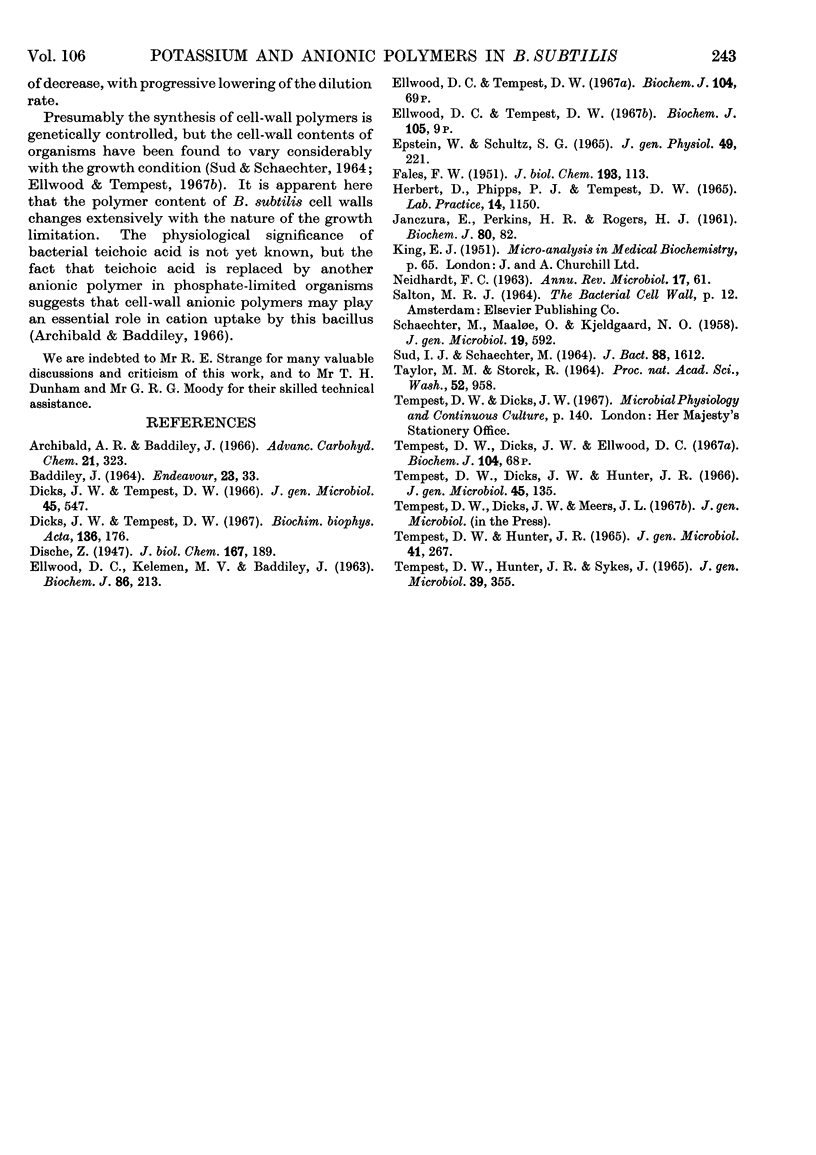
Selected References
These references are in PubMed. This may not be the complete list of references from this article.
- Archibald A. R., Baddiley J. The teichoic acids. Adv Carbohydr Chem Biochem. 1966;21:323–375. doi: 10.1016/s0096-5332(08)60320-3. [DOI] [PubMed] [Google Scholar]
- BADDILEY J. TEICHOIC ACIDS AND THE BACTERIAL CELL WALL. Endeavour. 1964 Jan;23:33–37. [PubMed] [Google Scholar]
- Dicks J. W., Tempest D. W. Potassium-ammonium antagonism in polysaccharide synthesis by Aerobacter aerogenes NCTC 418. Biochim Biophys Acta. 1967 Feb 7;136(1):176–179. doi: 10.1016/0304-4165(67)90340-6. [DOI] [PubMed] [Google Scholar]
- Ellwood D. C., Kelemen M. V., Baddiley J. The glycerol teichoic acid from the walls of Staphylococcus albus N.T.C.C. 7944. Biochem J. 1963 Feb;86(2):213–225. doi: 10.1042/bj0860213. [DOI] [PMC free article] [PubMed] [Google Scholar]
- Ellwood D. C., Tempest D. W. Teichoic acid or teichuronic acid in the walls of Bacillus subtilis var. niger, grown in a chemostat. Biochem J. 1967 Sep;104(3):69P–69P. [PMC free article] [PubMed] [Google Scholar]
- FALES F. W. The assimilation and degradation of carbohydrates by yeast cells. J Biol Chem. 1951 Nov;193(1):113–124. [PubMed] [Google Scholar]
- Herbert D., Phipps P. J., Tempest D. W. The chemostat: design and instrumentation. Lab Pract. 1965 Oct;14(10):1150–1161. [PubMed] [Google Scholar]
- JANCZURA E., PERKINS H. R., ROGERS H. J. Teichuronic acid: a mucopolysaccharide present in wall preparations from vegetative cells of Bacillus subtilis. Biochem J. 1961 Jul;80:82–93. doi: 10.1042/bj0800082. [DOI] [PMC free article] [PubMed] [Google Scholar]
- NEIDHARDT F. C. EFFECTS OF ENVIRONMENT ON THE COMPOSITION OF BACTERIAL CELLS. Annu Rev Microbiol. 1963;17:61–86. doi: 10.1146/annurev.mi.17.100163.000425. [DOI] [PubMed] [Google Scholar]
- SCHAECHTER M., MAALOE O., KJELDGAARD N. O. Dependency on medium and temperature of cell size and chemical composition during balanced grown of Salmonella typhimurium. J Gen Microbiol. 1958 Dec;19(3):592–606. doi: 10.1099/00221287-19-3-592. [DOI] [PubMed] [Google Scholar]
- SUD I. J., SCHAECHTER M. DEPENDENCE OF THE CONTENT OF CELL ENVELOPES ON THE GROWTH RATE OF BACILLUS MEGATERIUM. J Bacteriol. 1964 Dec;88:1612–1617. doi: 10.1128/jb.88.6.1612-1617.1964. [DOI] [PMC free article] [PubMed] [Google Scholar]
- TAYLOR M. M., STORCK R. UNIQUENESS OF BACTERIAL RIBOSOMES. Proc Natl Acad Sci U S A. 1964 Oct;52:958–965. doi: 10.1073/pnas.52.4.958. [DOI] [PMC free article] [PubMed] [Google Scholar]
- Tempest D. W., Dicks J. W., Ellwood D. C. Magnesium, potassium, and phosphorus inter-relationships in Bacillus subtilis var. niger, growing in a chemostat. Biochem J. 1967 Sep;104(3):68P–68P. [PMC free article] [PubMed] [Google Scholar]
- Tempest D. W., Hunter J. R., Sykes J. Magnesium-limited growth of Aerobacter aerogenes in a chemostat. J Gen Microbiol. 1965 Jun;39(3):355–366. doi: 10.1099/00221287-39-3-355. [DOI] [PubMed] [Google Scholar]
- Tempest D. W., Hunter J. R. The influence of temperature and pH value on the macro-molecular composition of magnesium-limited and glycerol-limited Aerobacter aerogenes growing in a chemostat. J Gen Microbiol. 1965 Nov;41(2):267–273. doi: 10.1099/00221287-41-2-267. [DOI] [PubMed] [Google Scholar]


